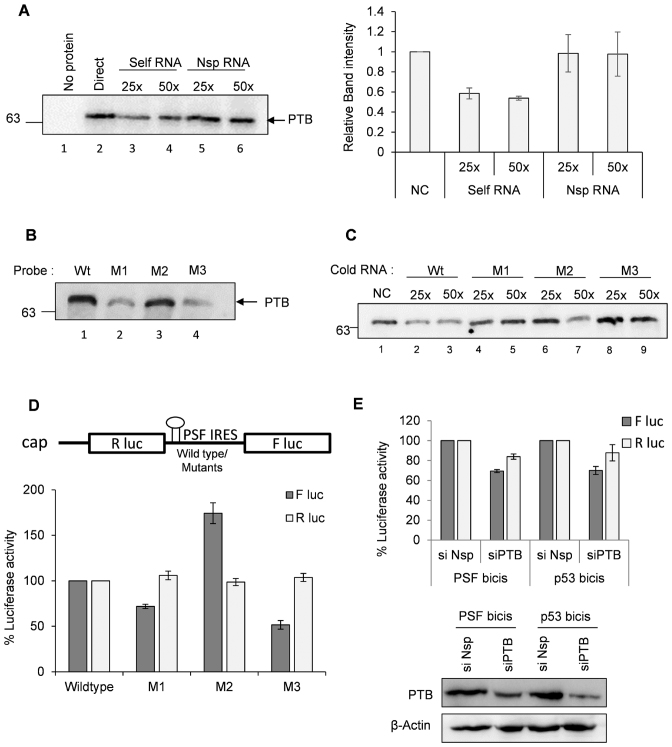Figure 7.
PTB interacts with PSF IRES and positively influences its IRES activity. (A) UV-crosslinking assay carried out with recombinant PTB with radio-labelled PSF IRES in presence of un-labelled PSF IRES or non-specific RNA. Graph represents the average intensities of bands visible in the autoradiograph of UV-crosslinking gel from 3 independent experiments. (B) UV-crosslinking assay carried out using recombinant PTB with wild type and mutant radio-labelled PSF IRESs. M1, M2 and M3 mutants were generated as represented in Supplementary Figure S6A. (C) Competition UV crosslinking assay carried out using radio-labelled wild type PSF 5′UTR with recombinant PTB, in presence of un-labelled wild type PSF IRES or mutant PSF IRESs as indicated. (D) Ex vivo IRES activity of wild type and mutant PSF IRESs. Capped RNAs were prepared from bicistronic constructs harbouring mutations in PSF IRES and wild type PSF IRES and were transfected in the cells. Cells were harvested at 8 h post-transfection and firefly luciferase activity indicating the IRES activity of wild type and mutant RNAs and renilla luciferase activity indicating cap-dependent translation are indicated. M1 and M3 mutants showed lower IRES activity as compared to wild type. * indicates P value < 0.05. Error bars indicate standard deviation from three independent experiments. (E) Effect of knockdown of PTB on PSF IRES activity. p53 IRES activity is used as positive control. Cells previously transfected with si-PTB or si-NSP were transfected with the PSF IRES. Luciferase assay was carried out after harvesting the cells in PLB buffer at 8 hours post transfection. * indicates P value < 0.05.

